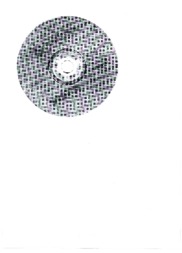Spatial variability index based on soil properties for notill and pasture site-specific management in Brazil.
Spatial variability index based on soil properties for notill and pasture site-specific management in Brazil.
Autoria: OLIVEIRA, R. P. de; BENITES, V. de M.; BERNARDI, A. C. de C.; RABELLO, L. M.; INAMASU, R. Y.
Resumo: Intensification of tropical grass pastures can be achieved through the grazing rotation, forage availability in the dry season, and building up soil fertility by liming and balanced fertilizer supplying. The knowledge of spatial variability soil properties is useful in the rational use of inputs, as in the variable rate application of lime and fertilizers. PA requires methods to indicate the spatial variability of soil reducing the need for expensive and intensive sampling. The objective of this work was to map and evaluate the soil chemical properties and maps the site specific liming and fertilizer need in a irrigated tropical pasture. The study was conducted in an area of 8 ha of pasture Mombaça-grass (Panicum maximum) irrigated and intensive managed in a rotational system with 48 paddocks in São Carlos, SP, Brazil. Soil samples were collected at 0?0.2 m depth with 6 sub-samples in each paddock. The values of soil P, K, CEC and basis saturation were analyzed by traditional soil testing. Apparent soil electrical conductivity (ECa) was measured with contact sensor. Spatial variability soil properties and site specific liming and fertilizer need were modeled using semivariograms and maps were obtained by kriging with Vesper software. Crop variation at this spatial scale was not affected by topography and other soil chemical properties related. NDVI and ECa had the same tendency of dry matter estimation. Results showed that the soil properties of study area are very homogeneous, and variable rate of potassium fertilizer has the potential to be adopted in the study area.
Ano de publicação: 2012
Tipo de publicação: Resumo em anais e proceedings
Unidade: Embrapa Instrumentação
Palavras-chave: Brazil, Evento, Tropical grassland, soil properties
Observações
1 - Por padrão são exibidas publicações dos últimos 20 anos. Para encontrar publicações mais antigas, configure o filtro ano de publicação, colocando o ano a partir do qual você deseja encontrar publicações. O filtro está na coluna da esquerda na busca acima.
2 - Para ler algumas publicações da Embrapa (apenas as que estão em formato ePub), é necessário ter, no celular ou computador, um desses softwares gratuitos. Sistemas Android: Google Play Livros; IOS: iBooks; Windows e Linux: software Calibre.
Acesse outras publicações
Acesse a Base de Dados da Pesquisa Agropecuária (BDPA) para consultar o acervo completo das bibliotecas da Embrapa.

